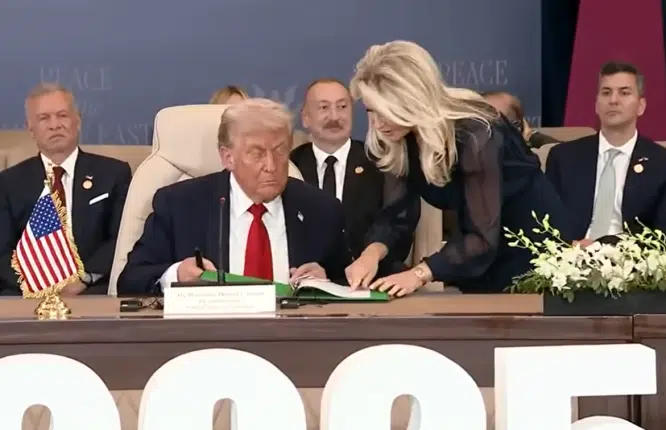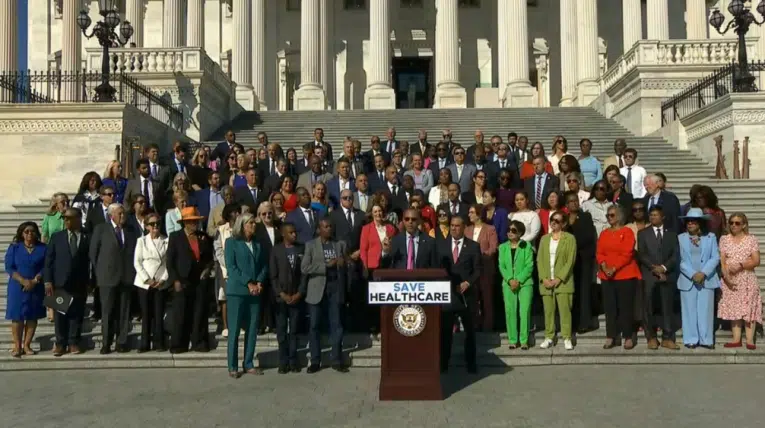 By Rick Manning — Five and a half days worth of government spending is all that would be cut if the sequester goes into effect on March 1.
By Rick Manning — Five and a half days worth of government spending is all that would be cut if the sequester goes into effect on March 1.
Having to eliminate five and a half days of spending is hardly the calamity that is coming out of every federal government agency and the White House at a steady clip.
The reason for the howling is two-fold.
One, any cut in government spending always elicits protests from all those who have a stake in increasing the size and scope of government, but as we have lurched from potential government shutdowns to fiscal cliffs to sequester, here are some basics to understand the latest “crisis.”
What is the sequester?
On March 1, the federal government will begin the process of making a set amount of cuts to the federal budget. This process was suggested by President Obama and voted for by Congress in order to avoid making any immediate budget cuts in relation to a raising of the debt ceiling in 2011. Originally the sequester was supposed to take place on January 1, 2013, but it was delayed to March 1 by the President and Congress.
How much is being cut from the federal government?
This is an example of why people get frustrated when trying to figure out what is going on in D.C. and end up turning off as different numbers get tossed around with all of them being correct.
The Congressional Budget Office estimates that spending will be cut by $85 billion over a period of years, or about $54 billion overall in 2013. Of that, actual discretionary spending in 2013 will only be cut by less than 4 percent or $44 billion.
To put the $44 billion of discretionary budget cuts into perspective, Congress and the President spent significantly more on emergency spending for Hurricane Sandy relief, and the decision to extend expanded unemployment benefits for 2013 added another $30 billion to the deficit.
Congress and the President spend $44 billion at the drop of a hat, yet when it comes time to make a similar cut, all heck breaks loose on the Potomac.
What is the difference between the discretionary and mandatory budgets?
In 2013, 34.1 percent of the federal budget is slated to be spent on discretionary spending, 59.5 percent on mandatory spending and 6.3 percent on interest payments on the debt, reports the Congressional Budget Office.
Discretionary spending is the money that Congress appropriates each year to be expended by the federal government, including Defense, Homeland Security, Transportation, Labor, Energy, some of Health and Human Services costs, and hundreds of alphabet soup agencies.
Mandatory spending, on the other hand, are those items like Social Security, Medicare, Food Stamps, Unemployment and Medicaid that are pre-programmed as expenditures based upon the demand for the services.
Is mandatory spending impacted by the sequester?
Yes, in a very limited way. Some federal payments to states to cover promised Medicaid and other costs will be cut. It will be up to the states to decide how to handle these changes in federal payments.
How much is our nation’s overall spending, and how does it compare to five years ago?
The United States government spent $810 billion more in 2012, than it did in 2007. By comparison, while the tax rates did not change, the revenues for that same five year period were down $98 billion.
So, how do we get out of this trillion dollar a year budget mess?
That is the $64,000 question, and with 59.5 percent of the budget expenditures in the mandatory, non-Congressionally appropriated areas, it is clear that this rapidly expanding spending category will have to be cut or contained to get the budget to balance.
It is also clear that any government actions that stop the growth of our private sector economy impede the growth of revenues that are needed to help catch up with the massive jump in expenditures over the past five years.
Will sequester hurt our nation’s Gross Domestic Product (GDP)?
Government expenditures are a large part of the way our government determines the GDP, so yes, the reported GDP will likely go down due to federal government budget cuts. But, the important metric is private sector growth, since the private sector growth creates increased government revenues through higher tax payments and real economic growth.
How much the less than 4 percent cuts in the size of the federal government’s overall budget impacts the economy will largely be determined by how the Obama Administration implements them.
If, as is indicated by the threats to shut down everything from Yellowstone to meat inspections, then the minor cuts could have a short term negative impact, with a long term gain. If, Obama decides to handle the 4 percent cuts in a responsible way, they will largely be unfelt by anyone living outside of the Washington, D.C. area.
With the sequester set to go into place on Friday, March 1, every American will learn if Obama will act like a spoiled child and attempt to create maximum pain, or if he will use this as an opportunity to cut real waste out of the system.
Rick Manning (@rmanning957) is the Vice President of Public Policy & Communications for Americans for Limited Government.






